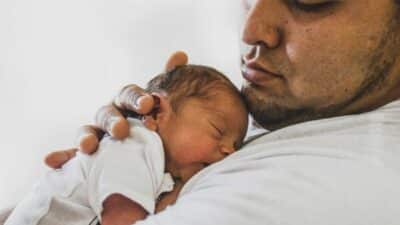Social Freezing: procedure & risks
What is Social Freezing?
Social freezing, also known as cryopreservation in medical terminology, refers to the precautionary process of harvesting and then freezing unfertilized eggs without medical necessity. With this method, women can prevent their age-related loss of fertility and fulfil their desire to have children at a later date by “thawing” the eggs again.
How does social freezing work?

Usually, the process of social freezing begins with the first consultation at a fertility clinic. Preliminary medical examinations then take place on site. After hormonal stimulation, several eggs are removed during the cryopreservation then shock-frozen (vitrification) and stored in the laboratory for a very long time.
Step 1: Preliminary examination
After a detailed preliminary discussion with experts, with reproductive physicians or fertility doctors, the next step is a preliminary medical examination using blood values (hormone balance) and ultrasound. The doctor will check whether the necessary requirements for social freezing are fulfilled (probability of success / chances) and inform you about possible risks of the treatment. Other uncertainties can be clarified in advance by a specialist.
Step 2: Preparing for hormonal stimulation
If you meet all the requirements after the preliminary examinations, a date will be set for the start of the stimulation. The plan for both the duration and dosage during the hormonal stimulation of the ovaries is drawn up in advance together with the doctor. The hormone dosage depends on the ovarian reserve. How large this reserve is can be determined using the level of the Anti-Müllerian Hormone (AMH). You can test your AMH level from the comfort of your own home with our self-test. As the corresponding medication is only available on prescription, you will receive a doctor’s prescription with professional instructions. Schedule enough time to receive the medication (usually injections) to be able to start on time.
Step 3: Hormonal stimulation
During a certain period of time, which often lasts between 10–14 days, you inject the prescribed hormone preparation at home. The hormonal stimulation should lead to as many eggs as possible maturing by the time of retrieval. In order to monitor the growth of the follicles and keep an eye on the hormone levels, regular check-ups are carried out via ultrasound and blood sampling. This also helps to determine whether the dosage should be changed and identify the perfect time to retrieve the matured eggs. After this determination, a hormone is injected once (“trigger shot”) to trigger ovulation. Once ovulation has been successfully triggered, the doctor can begin the collection procedure.
Step 4: Retrieval of the eggs
In order to retrieve the matured eggs, you will have to go to your accompanying fertility clinic (usually one day) after the last injection. You will be examined again and informed about the next steps. After a medical consultation, you will then be taken to an operating theatre where the retrieval will be carried out under a short anesthesia. The procedure is usually minor and only takes about 15–30 minutes. During this time, the doctor removes the follicles from the ovaries by so-called “vaginal follicle puncture”. Follicles, which contain a mature egg, are “sucked out” through a very thin needle. Following this short process, you will be taken to a quiet room to wake up and rest until you are ready to go home. For your own safety, you will need to be picked-up by a person of your choice due to the (albeit short) general anesthesia.
Step 5: Freezing (vitrification) of the eggs
After the follicles have been collected, a specialist biologist will examine how many of them contain a mature egg. Suitable oocytes are then frozen within a few seconds at ‑196°C (“shock freezing”). Medically, this procedure is also called “vitrification”. This method offers many advantages, as on the one hand it does not damage the cells and on the other hand has a very high, almost risk-free “restoration rate” (98%).
Step 6: Storing the eggs
The good thing is that you can safely store your vitrified eggs for several years, even decades. The greater the number of eggs stored, the greater the chance of pregnancy at a later date and thus of fulfilling your personal wish to have a child.
When the time is right for you, the eggs are thawed again and can then be fertilized.
After social freezing: usage of the eggs
You can decide for yourself if and when you want to thaw the eggs for use. If you cannot get pregnant naturally, you can have an in vitro ferilisation (IVF or ICSI). This involves fertilising the eggs with the man’s sperm cells. Once cell division has begun, the fertilised egg can be inserted into the uterus. Despite the high probability of success of achieving a pregnancy with the help of social freezing even at a late age, there is no guarantee of an uncomplicated family formation. Complications can occur for a variety of reasons, which is why specialist care is always recommended.
Possible risks with social freezing
Social Freezing is associated with few risks and is rather harmless. Apart from the increased likelihood of a multiple pregnancy with in vitro fertilisation, there remain possible complications that pregnancy at an older age can bring: increased susceptibility to gestational diabetes or high blood pressure.
At the same time, some risks are eliminated or greatly minimised in a pregnancy resulting from social freezing if the eggs were cryopreserved at the youngest possible age: genetic malformations or a high risk of miscarriage due to age.
About Fertilly
At Fertilly, we have made it our mission to accompany couples (homosexual and heterosexual) and singles on the way to fulfilling their child wish. In doing so, it is important to us to create transparency in the area of fertility services, to provide information and knowledge on the topics of pregnancy and fertility and to help you to find the most suitable Fertility Center. Through cooperation with first-class Fertility Centres and clinics in Europe, enquiries about Fertilly are given preferential treatment. This means that our patients avoid the usually long waiting times and get appointments more quickly.
If you would like more information about Fertility Centers, success rates and prices, please contact us using this questionnaire. We will advise you free of charge and without any obligation.
-
Answer the first questions in the online form in order to book an appointment. This way we can better address your needs during the conversation.
-
We will find the best contact person for your individual needs. Schedule 20 minutes for the consultation.
-
We will introduce you to the right fertility clinic from our network, make an appointment and accompany you until your wish for a child is fulfilled.
Sources:
1. https://www.spiegel.de/gesundheit/schwangerschaft/einfrieren-der-eizellen-so-funktioniert-social-freezing-a-997312.html
2. https://www.social-freezing-info.de/ablauf-social-freezing-behandlung-was-kostet-social-freezing
3. F. Nawroth: Reproduktionsmedizin. Vitrifikation. Georg Thieme Verlag KG Stuttgart · New York. 2015; 75(09): 883–886.
4. Deutsches IVF-Register. In: J Reproduktionsmed Endokrinol. 9 (6), 2012, S. 453–484
5. A. Cobo, V. Serra: Obstetric and perinatal outcomeof babies born from vitrified oocytes. Fertility and Sterility. 102, Nr. 4, Okt 2014.
6. N. Noyes, E. Porcu, A. Borini: Over 900 oocyte cryopreservation babies born with no apparent increase in congenitalanomalies. Reprod Biomed Online. 18, Nr. 6, 2009.










